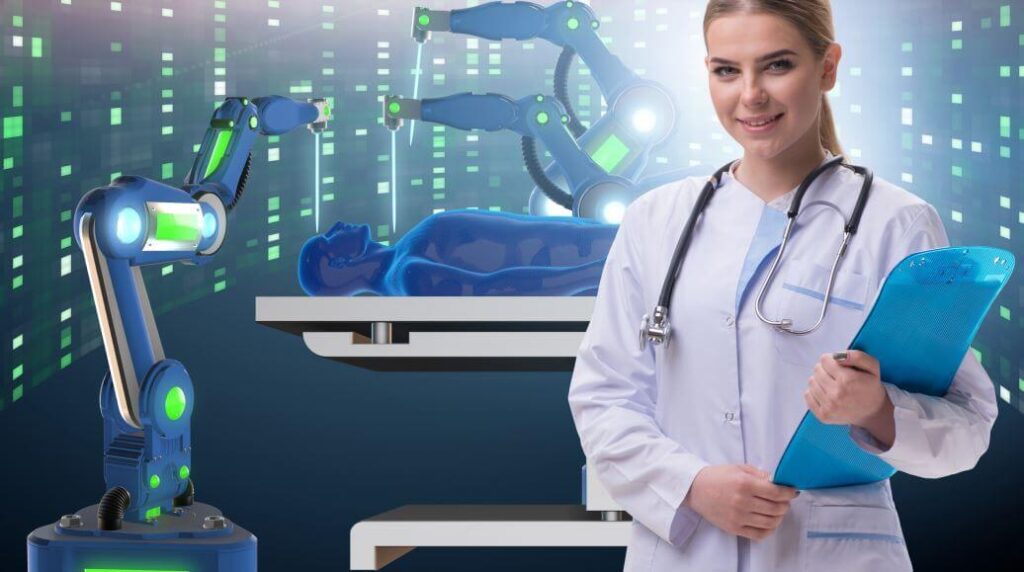The human need for health around the world created the science of Telemedicine
The continuous progress and development of both the medical and technology sectors are unquestionable. Every day, new discoveries are made, as well as new inventions for the application of these methods.
Thus, the health centers of large urban centers where the needs of the population demand it, are usually equipped with the most advanced machine technology, as well as staffed with a variety of trained medical and nursing staff, capable of handling them.
However, this is not the case in the province. The health centers of remote areas (villages, islands, remote areas) suffer from a lack of infrastructure.

Many times, technological medical equipment is less than absolutely necessary and the medical staff, in cases where it is considered sufficient, is not specialized and trained to conduct proper medical consultations in combination with this equipment. Therefore, the population of these areas did not experience equal privileges and services as those of large urban areas.
The need to develop a service that will serve the medical needs and shortages in the provincial areas was great. The rapid progress of communication networks however, allowed the creation of this service, Telemedicine.
How is transmitted
The applicability of Telemedicine is based on signal transmission media, media networking and in ways and tools of information retention. These are mentioned briefly below:
- Internet
- Fibber optics
- Communication satellites
- Wireless networks
- Radio technology for navigation (for trains, planes, ships, etc.)
- Reference protocol model
- Cell radio technologies
- Databases (for medicines, medical equipment)
- Telemedicine devices (screens, computers, tablets etc)
- Other compatible tools (spirometers, cardiographs, etc.)
- Bio signs
- Laboratory analyses
- 2 2D, 3D images
- Medical records data – accompanying data
Areas of specialization in Telemedicine
Distance education: Establishes the continuous information of medical and pre-medical staff on medical issues, as well as informs and educates patients on behavioural standards with the aim of not only preventing disease but also protecting and promoting health.
Telepsychiatry: The ability to monitor patients with mental health problems remotely, either individually (session with a patient) or group (group therapy sessions).
Telemedicine for emergencies (emergency telemedicine): Studies have shown that timely and prompt pre-hospital care in emergencies, such as heart attacks, helps to significantly reduce mortality and improve the patient’s course. Moreover, telemedicine for emergencies accounts for 39.8% of the demand for telemedicine services. In addition, its application has improved treatment efficiency of patients by 23%.

Cases where its use is appropriate:
• Heart attacks
• Ischemic Stroke (timely and correct diagnosis for administration plasminogen activator within 3 hours of the event).
• Emergency support (e.g., earthquake)
• Surgical diseases & wound care
• Orthopaedic diseases
Telediagnosis: Provides the possibility of remote study of medical cases, medical examinations and the preparation of relevant reports by specialists.
Teletherapy: In this way, the patient, addressed to the nearest medical center, is monitored by central doctor’s hospital units, which contribute to its care.
Teleconsultation: The exchange of medical views (by doctors of different and non-specialties) and the extraction of information from databases is achieved, as well as the organization of medical councils of specialists with the aim of conducting medical advice on more complex cases of patients.
The Future of Telemedicine
It is a fact that today many insurance companies offer health programs that include many telemedicine applications. In the near future it is now clear that we will have the combination of the internet of things with telemedicine.
Today, especially after the coronavirus pandemic, we know that the benefits of telemedicine are for the whole population and not just for specific groups. With a view to distancing ourselves, we sought such services and all, to a greater or lesser degree, wondered about the overall benefits of telemedicine, when it is available to a wide range of citizens.
Technology, once accepted and adopted, is expected to be an important development in medical care, leading to the realization of the ideas of telemedicine companies are:
- Surveillance for the spread of the virus in an area infected with the virus
- Remote home monitoring in cases of chronic diseases or the elderly.
- Use of BSN (Bachelor of Science in Nursing) in the intensive or postoperative period to monitor the patient’s progress.
- Critical biomarker recording systems for timely and remote monitoring so that various diseases or dysfunctions can be detected and the monitoring of the limits of certain substances in the human body can be achieved.



